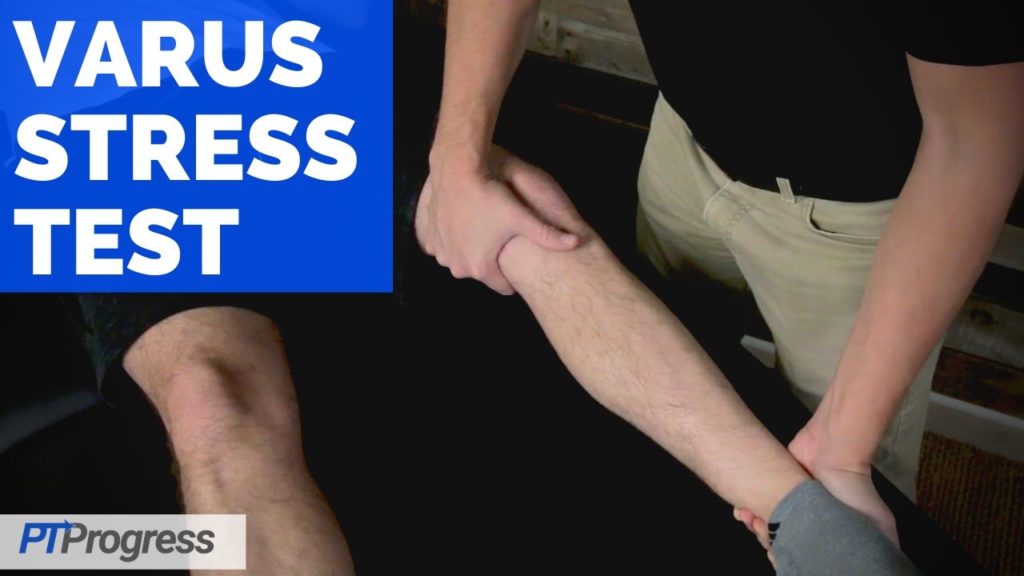
Purpose: The Varus Stress Test is used to assess the integrity of the LCL or lateral collateral ligament of the knee. This is a key test to perform when assessing for posterolateral instability of the knee.
How to Perform Varus Stress Test
Position of Patient: The patient should be relaxed in the supine position.
Performance: The examiner will support the knee and lower leg at the ankle, applying a varus stress at the knee in full extension. The test should also be performed with the knee positioned into 20 to 30 degrees of flexion, applying the same varus force to the knee.
How to Interpret Varus Stress Test
Positive Finding: A positive test occurs when gapping or pain is noted with this test in full knee extension; this may suggest both an LCL and cruciate injury. With the knee at 20 to 30 degrees of flexion, a positive test occurs when pain is noted along the lateral knee or gapping is present.
Test Accuracy / Reliability / Evidence:
Sensitivity: 25%
Source: Harilainen A et al. Diagnosis of acute knee ligament injuries: The value of stress radiography compared with clinical examination, stability, under anesthesia and arthroscopic or operative findings. Ann Chir Gynaecol. 1986;75:37-43.

